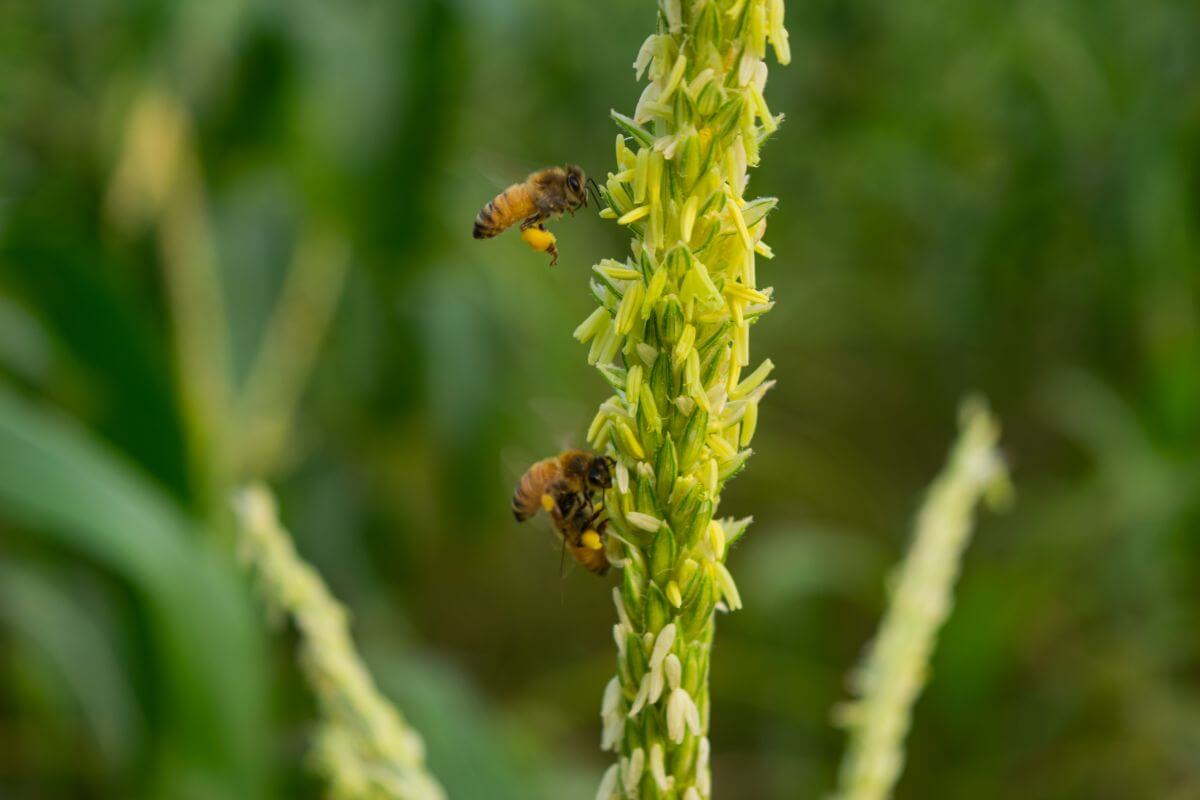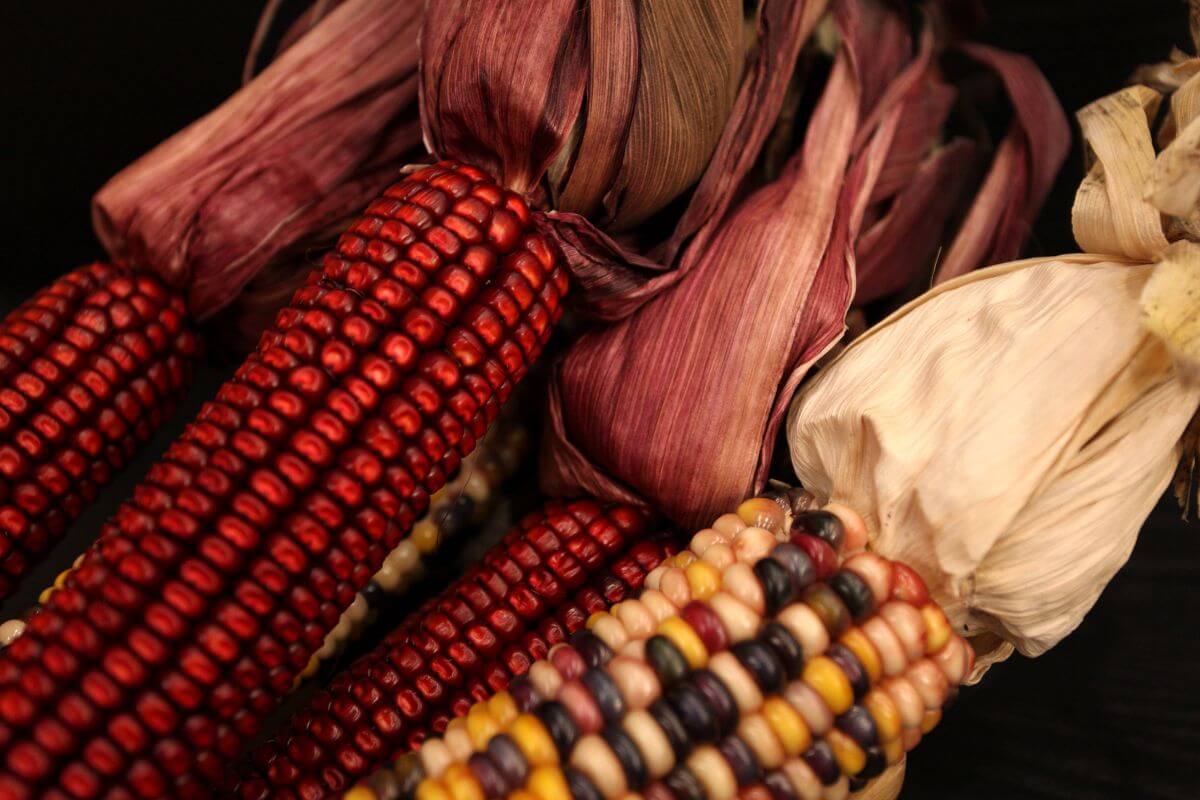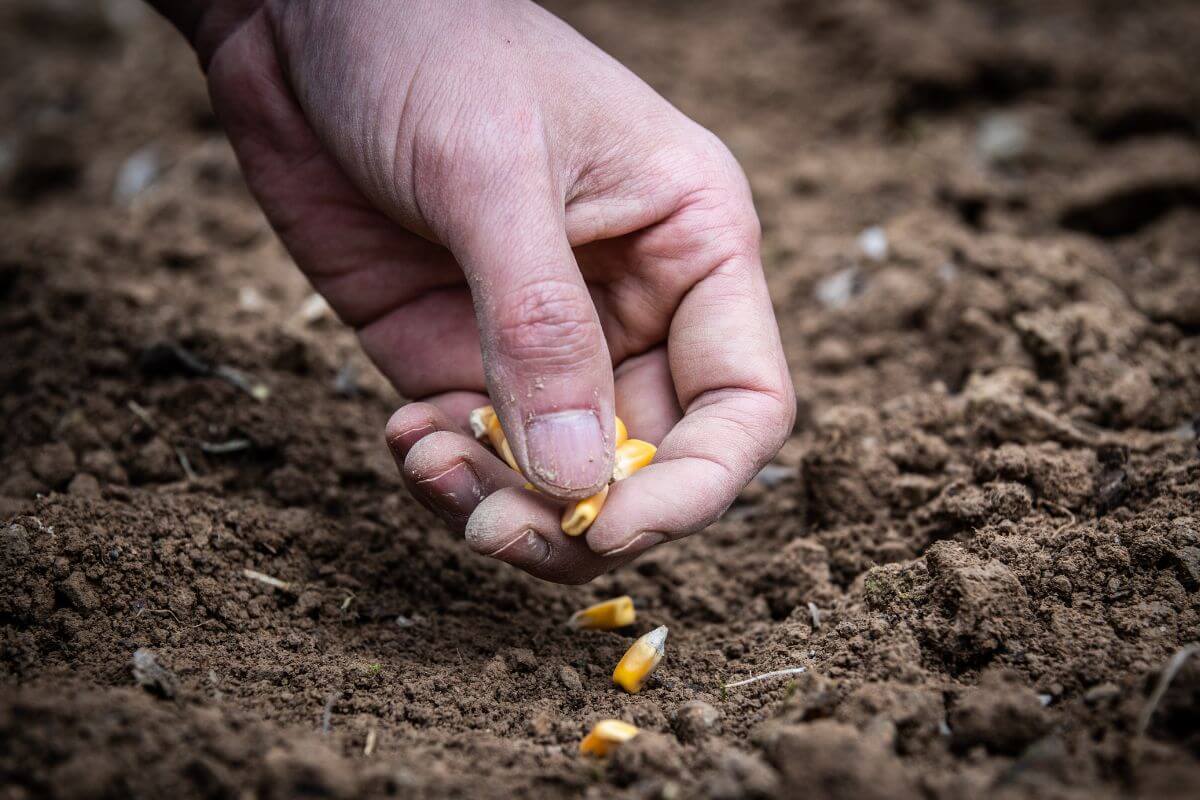Open-pollinated corn brings a touch of nature back to farming. Have you ever wondered how corn used to grow all by itself? Open-pollinated corn does just that. It’s a throwback to a time when farmers saved seeds from the best ears, letting the corn evolve naturally.
This guide will take you through open-pollinated corn’s rich history and the benefits of growing it today. You’ll learn about the different varieties that offer unique tastes and colors. I’ll also explore the practical side: how to grow and care for open-pollinated corn to ensure a successful harvest.
If you’re interested in preserving old traditions or you simply love the idea of growing your food from seed to seed, open-pollinated corn might be just what you’re looking for. Let’s dive into the details and discover the beauty and simplicity of this special crop.
- Related article: What Is Open Pollination?
7 Key Takeaways on Open Pollinated Corn
- Open-pollinated corn pollinates naturally without human intervention, resulting in genetically diverse plants.
- Farmers historically improved open-pollinated corn by saving seeds from the best ears each year.
- Saving seeds from open-pollinated corn allows adaptation to local growing conditions.
- Open-pollinated varieties help maintain genetic diversity, crucial for resilience against pests and climate changes.
- Hybrid corn, favored for uniformity and higher yields, cannot reliably reproduce from saved seeds.
- Heirloom corn varieties are cherished for their historical significance and unique flavors.
- Growing organic corn is gaining popularity despite its challenges, offering environmental benefits over GMO varieties.
What Is Open-Pollinated Corn?

Open-pollinated corn grows on its own. The plants pollinate without human help, making each plant genetically different. These types of corn are less sweet and don’t stay fresh as long as modern hybrid sweet corn.
Farmers used to grow open-pollinated corn by saving seeds from the best ears each year. Pollen from nearby plants fertilized these ears, creating unique offspring. This allowed farmers to slowly improve the corn by choosing traits like better grain, larger ears, and easier hand-harvesting.
The main benefit of open-pollinated corn is that farmers can save seeds each year. This helps them adapt the corn to local growing conditions. In areas with fewer resources, the performance gap between open-pollinated and hybrid corn is smaller.
Open-pollinated corn helps keep genetic diversity alive. This diversity protects crops from pests, diseases, and changing climates. It also preserves unique flavors and cultural traits important to some communities.
Before the 20th century, most corn grown in the U.S. was open-pollinated. Hybrid corn became popular because it yields more and is more uniform. However, some people still prefer open-pollinated corn for its unique taste and characteristics.
Though not as sweet as hybrid sweet corn, open-pollinated corn has special flavors. These unique traits are valued by certain growers and consumers.
Another type of crop that can be grown from seed to seed is tomatoes. Many varieties of open-pollinated tomatoes can thrive in your garden, each offering unique flavors and textures.
Open Pollinated Corn Varieties

While there are still quite a few open-pollinated corn variety offerings, they seem to be more of a novelty than a staple.
Here are eight varieties of open-pollinated corn:
- Country Gentleman – An open-pollinated sweet corn variety with kernels that are not neatly arranged in rows. It is also a great corn for roasting.
- Howling Mob – A popular open-pollinated yellow corn variety known for its excellent sweet flavor.
- Six Shooter – An open-pollinated field dent corn variety that is excellent for roasting, frying, or other cooking uses.
- Bloody Butcher – An open-pollinated dent corn variety with a distinct red or purple color.
- Blue Clarage – An open-pollinated blue corn variety with a unique color and flavor.
- Boone County White – An open-pollinated white corn variety that was historically grown in the Midwest.
- Stowell’s Evergreen – Called the “King of All White Sweet Corn Varieties,” an open-pollinated heirloom sweet corn.
- Golden Bantam – An open-pollinated sweet corn variety known for its excellent sweet flavor and broad, evenly spaced kernels.
You can grow different types of corn like sweet corn, field corn, and popcorn. Corn needs a lot of space to grow and is pollinated by the wind, so cross-pollination happens easily. To avoid this, you should keep corn fields 400-500 feet apart.
Comparing Open-Pollinated vs Hybrid vs Heirloom Corn
| Type of Corn | Description | Seed Reproduction | Key Traits |
|---|---|---|---|
| Open-Pollinated Corn | Naturally bred through wind and insects, adapting well to local conditions over generations. | Seeds can be saved and replanted, usually growing similar plants. | Gentler, has a more complex taste compared to hybrid corn |
| Hybrid Corn | Created by crossing different parent varieties for specific traits like higher yields or disease resistance. | Seeds can’t be reliably saved and replanted to grow the same type. | Higher yields, specific traits like disease resistance, but not reproducible. |
| Heirloom Corn | A special kind of open-pollinated corn passed down through generations within families or communities. | Seeds can be saved and replanted, maintaining unique traits. | Prized for historical significance, distinctive regional qualities, and flavors. |
- Read more about the differences between Open Pollinated vs Hybrid vs Heirloom Seeds
How to Grow Open Pollinated Corn?

If you’re planning to grow open-pollinated corn, here’s a step-by-step guide to help you start and cultivate your crops:
- Choose an open-pollinated corn variety suited to your climate and conditions. Options include Reid’s Yellow Dent, Minnesota 13, and Wapsie Valley.
- Plant corn in blocks or squares for better pollination. Keep at least 660 feet away from other corn types to prevent mixing.
- Prepare the soil by plowing and harrowing before planting. Corn likes well-drained, fertile soil with a pH of 6.0-6.8.
- Plant corn seeds 1-2 inches deep and space them 8-12 inches apart in rows 36-40 inches apart. Use a planter or hand-plant in rows or hills.
- Control weeds by cultivating the soil carefully around the shallow corn roots, 1-2 times during growth.
- Harvest corn ears when kernels show a black layer forming at the base, signaling maturity. Aim for kernels with less than 15% moisture for safe storage.
- Dry harvested ears using forced air at 100°F until moisture is below 14%. Remove kernels from cobs and clean out debris and damaged kernels.
- Test saved seeds for germination rate and store them in a cool, dry, rodent-proof place. Aim for a germination rate of at least 90%.
When picking seeds, choose ears from the healthiest, earliest plants with full cobs. This ensures strong future crops. After harvesting seed ears, avoid letting them freeze, as this can harm future germination.
To manage pests like corn borers and improve soil health, rotate your corn fields yearly and plant in grassy areas. This breaks pest cycles and adds nutrients to the soil.
For better genetic diversity, manually pollinate some ears on each plant by moving pollen from the tassel to the ear. This helps keep your crop healthy and resilient.
You can buy these seeds online from Amazon. I grow them in my yard, and these open-pollinated corn seeds reliably thrive.
GMO Corn
Many countries have banned GMOs, but in America, most corn grown is genetically modified. GMO corn is engineered to withstand herbicides and resist disease and pests.
Given the high demand for corn, farmers find GMOs appealing because they’re easier to grow disease-resistant plants compared to traditional methods like mass selection or open pollination.
GMO crops offer uniformity and require less labor. Farmers can use fertilizers and chemicals to ensure good yields.
Commercial farmers choose GMO corn because they sell large quantities to companies and grocery stores. Large fields increase the risk of unintended cross-pollination.
Despite the convenience, GMOs have significant environmental impacts and may lower corn prices. Organic corn, though harder to grow, is becoming more popular among farmers.
Final Thoughts on Open Pollinated Corn
Growing open-pollinated corn at home brings a unique satisfaction and a taste that’s hard to beat. It’s so fresh and delicious that you might just decide to always grow your own.
Finding a variety that thrives in your local weather is key. Once you do, think about starting a seed swap in your community. This can get more people growing the kind of corn that does best in your area.**
Seed swaps are cool because they let you trade seeds with others. You might get seeds from someone who grows everything organically. And who knows, you might discover a local favorite that’s been around for ages.
This direct approach to growing your own food creates a connection to what you eat that’s hard to match. It’s also a way to preserve old varieties and support sustainable farming.
Growing open-pollinated corn is a way to keep things simple and close to nature. It’s about more than just gardening — it’s about community, flavor, and tradition.
Open Pollinated Corn FAQs
1. Why Choose Open-Pollinated Corn Over GMO Varieties?
Open-pollinated corn offers unique flavors, cultural significance, and environmental benefits without the use of genetic modification or synthetic chemicals.
2. What Are the Differences Between Open-Pollinated and Hybrid Corn?
Open-pollinated corn breeds naturally and allows seed saving, while hybrid corn results from controlled crosses and doesn’t reliably reproduce from saved seeds.
3. What Are the Benefits of Open-Pollinated Corn?
It allows farmers to save seeds for future crops, adapt to local conditions, and maintain genetic diversity.




